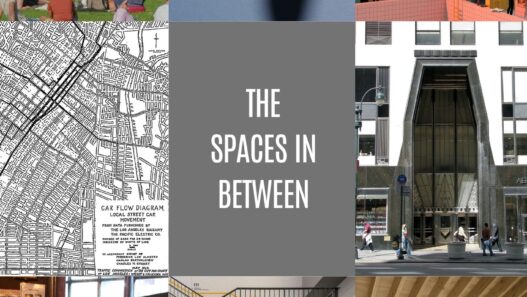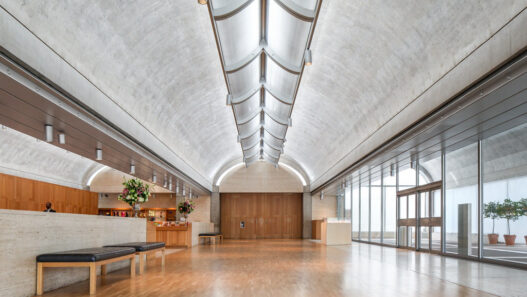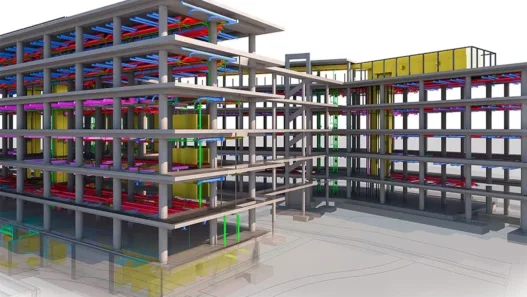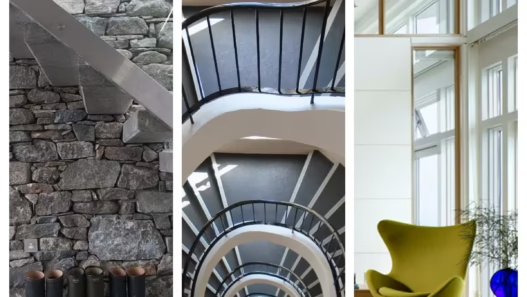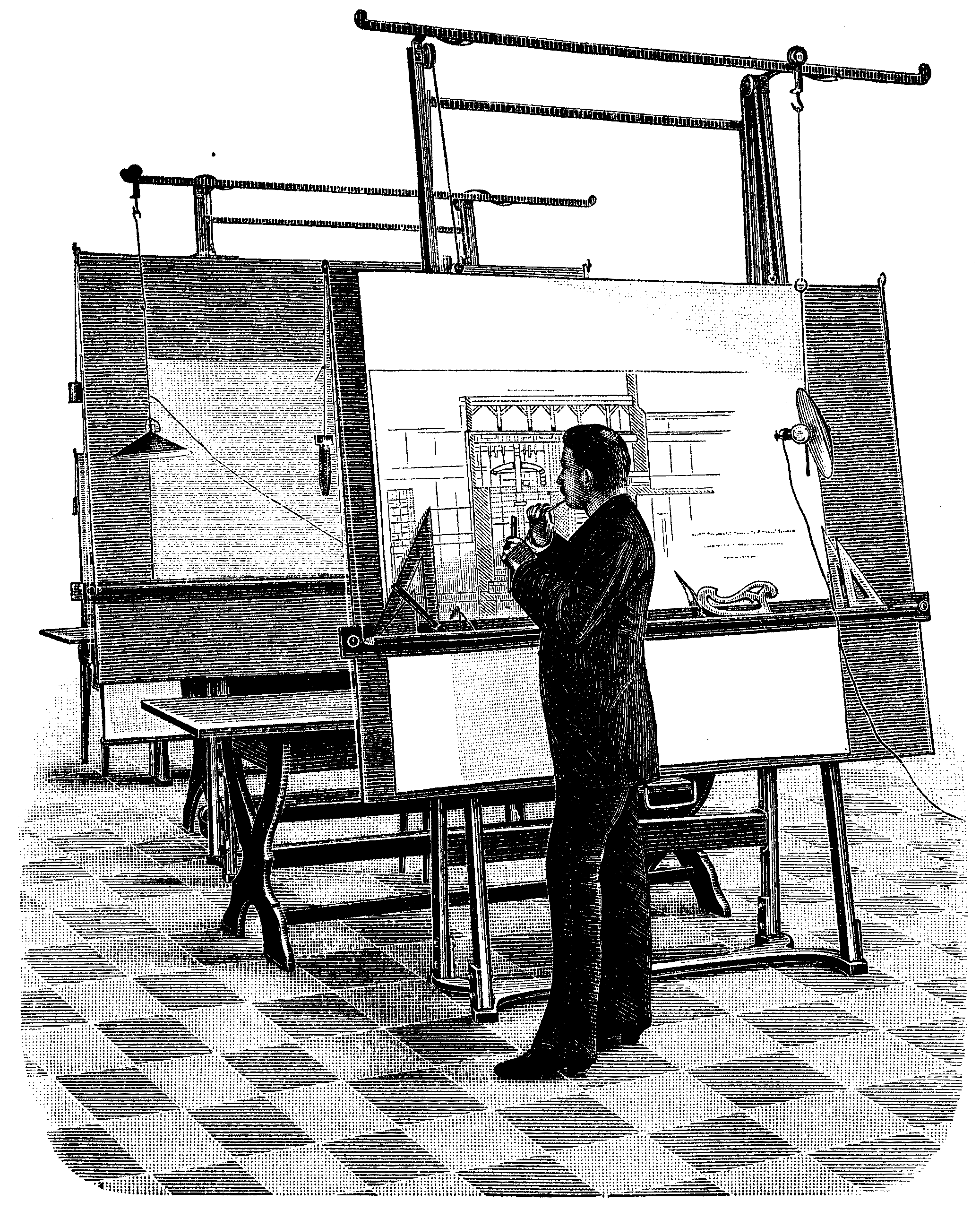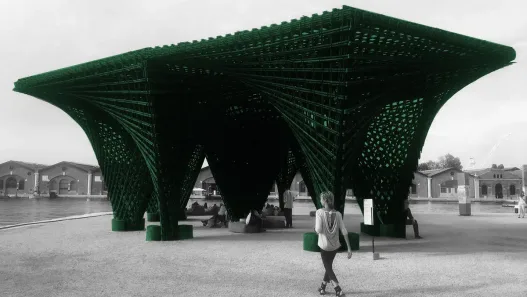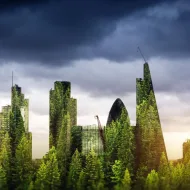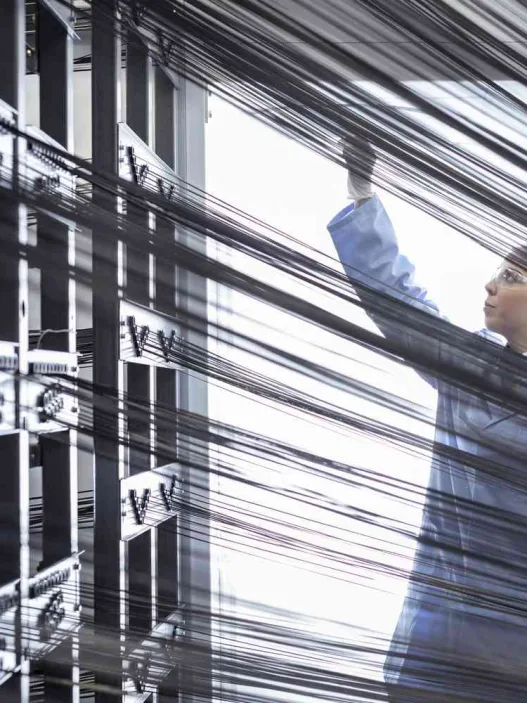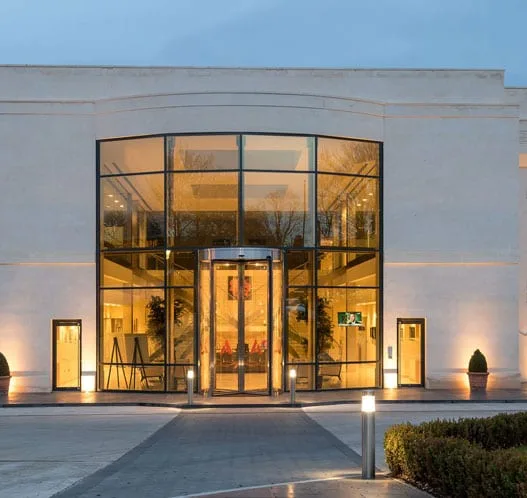Imagine a strong, flexible, fast-growing and beautiful material. This is bamboo, a wonder of nature that has been used for centuries in construction, furniture and even food. It is a versatile material with a rich history and a promising future in sustainable design.

Defining Bamboo: Properties and Characteristics
Bamboo is a species of grass, not a tree, that grows rapidly in tropical and subtropical climates. It is known for its exceptional strength and flexibility, making it ideal for a variety of construction applications.
- Strength: Bamboo is incredibly strong, in some cases comparable to steel. Its hollow structure and fibrous composition give it exceptional tensile strength.
- Flexibility: Bamboo is also extremely flexible, allowing it to be bent and moulded into curved structures. This makes it ideal for creating unique and innovative designs.
- Fast Growth: Bamboo is one of the fastest growing plants on earth, reaching maturity in just a few years. This makes it a renewable and sustainable resource.
- Sustainability: Bamboo is a highly sustainable material, requiring minimal water and no pesticides or herbicides to grow. It also absorbs carbon dioxide from the atmosphere, making it a climate-friendly choice.
Historical Context: The Role of Bamboo in Asian Architectural Traditions
Bamboo has been a cornerstone of Asian architecture for centuries. From the humble dwellings of rural villages to the grand palaces of emperors, bamboo has been used to create both beautiful and functional structures.
- China: Bamboo has been used in China for thousands of years for everything from bridges and houses to furniture and musical instruments.
- Japan: In Japan, bamboo is widely used in traditional architecture, especially in the construction of tea houses and temples.
- India: Bamboo is a vital material used in Indian architecture for building houses, bridges and scaffolding.
Cultural Significance of Bamboo: Symbolism and Utility
Beyond its practical applications, bamboo has a special place in Asian cultures, symbolising strength, flexibility and durability.
- Symbolism: Bamboo is often associated with longevity, prosperity and good luck. Its rapid growth is seen as a symbol of vitality and renewal.
- Usefulness: Bamboo is used for a wide variety of purposes, from building materials to food and medicine. It is a versatile and essential resource in many Asian cultures.
Understanding the Relationship between Bamboo and Sustainability
Bamboo is the best example of a sustainable material. Its fast growth rate and low environmental impact make it a responsible choice for construction and design.
- Renewable Resource: Bamboo is a renewable resource, meaning it can be harvested without depleting the forest.
- Low Carbon Footprint: Bamboo absorbs carbon dioxide from the atmosphere while growing, making it a carbon-negative material.
- Biodegradable: Bamboo is biodegradable, meaning it will naturally decompose at the end of its life cycle.
Global Trends: The Resurgence of Bamboo in Contemporary Design
In recent years, there has been a growing interest in bamboo as a building material due to concerns about sustainability and the desire for innovative design.
- Modern Architecture: Architects are incorporating bamboo into modern buildings, creating unique and sustainable designs.
- Furniture and Design: Bamboo is being used to create stylish and environmentally friendly furniture, lighting and other design objects.
- Construction Technology: New technologies are being developed to make bamboo construction more efficient and cost-effective.
As we move towards a more sustainable future, bamboo is poised to play an increasingly important role in architecture and design. Bamboo’s strength, flexibility and sustainability make it a valuable resource for creating beautiful, functional and environmentally sensitive structures.
Historical Uses of Bamboo in Asian Architecture
For centuries, bamboo has been woven into the fabric of Asian architecture, serving as a testament to the creativity and resourcefulness of its people. From humble dwellings to grand palaces, bamboo has been used to create both beautiful and functional structures that reflect the unique cultural traditions and environmental conditions of each region.
Ancient Civilisations: The Role of Bamboo in Early Structures
The use of bamboo in construction dates back thousands of years and there is evidence of its use in ancient civilisations in Asia.
- China: Bamboo has been used in China for over 4,000 years and early structures such as the “bamboo houses” of the Shang Dynasty (1600-1046 BC) demonstrate its versatility.
- India: Bamboo has been a vital material in Indian architecture since ancient times, used to build houses, bridges and scaffolding. Ancient Vedic texts mention bamboo as a sacred plant used in rituals and ceremonies.
- Japan: In Japan, bamboo has been used in construction since the Jomon period (14,000-300 BC), and early structures such as the “bamboo huts” of the Yayoi period (300 BC-300 AD) demonstrate the adaptability of bamboo.
Regional Variations: Differences in Bamboo Utilisation among Asian Countries
While bamboo is a common building material throughout Asia, its specific uses and construction techniques vary considerably depending on the region and its unique cultural and environmental context.
- China: Chinese architecture often features elaborate bamboo structures such as pagodas, bridges and garden pavilions. Bamboo is also widely used in furniture, handicrafts and musical instruments.
- Japan: Japanese architecture emphasises simplicity and harmony with nature; bamboo is often used in the construction of teahouses, temples and traditional houses. Bamboo is also used for fences, screens and other decorative elements.
- India: Bamboo is a vital material used in Indian architecture to build houses, bridges and piers. It is also used to make baskets, mats and other household items.
Construction Techniques: Traditional Bamboo Crafting Methods
Over the centuries, skilled craftsmen have developed a range of techniques for working with bamboo, creating structures that are both strong and aesthetically pleasing.
- Splitting and Weaving: Bamboo is often split into thin strips and woven together to form walls, roofs and other structural elements.
- Binding and Tying: Bamboo poles are often tied together using natural fibres, creating strong and flexible structures.
- Bamboo Lattice: Bamboo lattice work is a common feature in Asian architecture and is used to create screens, walls and decorative elements.
Iconic Examples: Important Structures Using Bamboo
Across Asia, there are countless examples of iconic structures that showcase the beauty and ingenuity of bamboo architecture.
- Golden Temple, Myanmar: This iconic Buddhist temple features a stunning golden roof supported by an intricate network of bamboo beams.
- Bamboo Bridge, Vietnam: Situated over a river in the Mekong Delta, this impressive bridge is a testament to the strength and flexibility of bamboo.
- Bamboo House, Japan: Built entirely of bamboo, this traditional Japanese house showcases the beauty and simplicity of bamboo architecture.
Historical Buildings and Bamboo Elements
Many historic buildings in Asia contain elements that demonstrate the versatility and enduring appeal of bamboo.
- Forbidden City, China: This grand palace complex, built in the 15th century, features numerous bamboo structures, including pavilions, bridges and gardens.
- Kiyomizu-dera Temple, Japan: Built in the 8th century, this iconic temple features a stunning wooden stage supported by a network of bamboo beams.
- Taj Mahal, India: Although constructed primarily of marble, the Taj Mahal also features intricate bamboo scaffolding used during its construction.
These examples demonstrate the enduring legacy of bamboo in Asian architecture, demonstrating its beauty, strength and sustainability. As we move towards a more sustainable future, bamboo is poised to play an even greater role in architecture and design, drawing inspiration from its rich history and embracing its potential for innovation.
Architectural Elements Made from Bamboo
The versatility of bamboo extends beyond its use as a structural material. It can be transformed into a wide variety of architectural elements, each contributing to the beauty, functionality and sustainability of a building.
Frames Structural Benefits of Bamboo in Construction
The strength and flexibility of bamboo make it an ideal material for creating strong and flexible frames.
- Columns and Beams: Bamboo poles can be used as columns and beams to support roofs, walls and floors. Their natural curvature allows for unique and innovative designs.
- Lattice Work: Bamboo lattice work can be used to create light and airy structures such as walls, screens and ceilings.
- Scaffolding: Bamboo’s strength and flexibility make it an excellent material for scaffolding, providing a safe and stable platform for construction workers.
Roofs Use and Advantages of Bamboo Straw Cover
Bamboo thatch is a traditional roofing technique that has been used in Asia for centuries. It is a sustainable and aesthetically pleasing option for roofing.
- Durability: Bamboo thatch is incredibly durable, can withstand harsh weather conditions and last for decades.
- Insulation: Bamboo thatch provides excellent insulation, keeping buildings cool in summer and warm in winter.
- Aesthetics: Bamboo thatch creates a unique and rustic aesthetic, adding warmth and character to any building.
Walls Bamboo Panels and Their Aesthetic Appeal
Bamboo panels can be used to create both beautiful and functional walls.
- Privacy and Screening: Bamboo panels can be used to create privacy screens, divide spaces or block unwanted views.
- Sound Insulation: Bamboo panels can help reduce noise levels, creating a more peaceful and calm environment.
- Aesthetics: Bamboo panels come in a variety of styles and finishes and add a natural and elegant touch to any interior or exterior space.
Interiors: The Role of Bamboo in Creating Warm and Inviting Spaces
Bamboo can be used to create warm and inviting interiors, adding a touch of natural beauty and sophistication.
- Flooring: Bamboo flooring is a durable and sustainable option that adds warmth and elegance to any room.
- Furniture: Bamboo furniture is lightweight, durable and stylish, adding a natural beauty to any space.
- Decorative Elements: Bamboo can be used to create a variety of decorative elements such as screens, lamps and wall art.
By incorporating bamboo into various architectural elements, designers can create structures that are not only beautiful and functional, but also sustainable and environmentally conscious. Bamboo’s versatility and natural beauty make it a valuable resource for creating both modern and timeless spaces.
Bamboo in Traditional and Modern Asian Architecture
A material with deep roots in Asian culture, bamboo continues to inspire architects and designers by bridging the gap between tradition and modernity. This is a testament to the enduring power of this versatile material that adapts to changing needs while honouring its rich heritage.
Traditional Designs: Preserving Cultural Heritage through Bamboo
Bamboo has been a cornerstone of Asian architecture for centuries, shaping the landscapes of villages, towns and cities. Traditional designs reflect the unique cultural and environmental contexts of each region, demonstrating the versatility and adaptability of the material.
- Vernacular Architecture: Traditional bamboo structures, often built using local techniques and materials, embody the spirit of place and community. They are a testament to the creativity and resourcefulness of past generations.
- Religious Buildings: Temples, pagodas and shrines in Asia often feature intricate bamboo elements, showcasing the material’s ability to create sacred and awe-inspiring spaces.
- Domestic Architecture: From humble dwellings to grand palaces, bamboo has been used to create comfortable and functional living spaces that reflect the local climate and lifestyle.
Modern Innovations: Blending Contemporary Design with Traditional Techniques
Modern architects are embracing the potential of bamboo, blending traditional techniques with contemporary design principles to create innovative and sustainable structures.
- Sustainable Design: Bamboo’s rapid growth rate, low environmental impact and natural strength make it the perfect material for sustainable architecture.
- Innovative Techniques: Modern architects are experimenting with new techniques for working with bamboo, pushing the limits of its structural capabilities.
- Aesthetic Exploration: Contemporary designs often incorporate bamboo in unexpected ways, creating visually striking and functional spaces.
Sustainability Practices: Environmentally Friendly Approaches in Bamboo Construction
Bamboo construction is inherently sustainable, minimising environmental impact and promoting resource conservation.
- Renewable Resource: Bamboo is a rapidly renewable resource, making it a responsible choice for construction.
- Low Carbon Footprint: Bamboo absorbs carbon dioxide as it grows, making it a carbon-negative material.
- Biodegradable: Bamboo is biodegradable, meaning that it decomposes naturally at the end of its life cycle.
Important Examples of Traditional and Modern Bamboo Architecture
All over Asia, there are countless examples of traditional and modern bamboo architecture that showcase the enduring appeal of the material.
- Golden Temple, Myanmar: Built in the 11th century, this iconic Buddhist temple features a stunning golden roof supported by an intricate network of bamboo beams.
- Bamboo Bridge, Vietnam: Situated over a river in the Mekong Delta, this impressive bridge is a testament to the strength and flexibility of bamboo.
- Bamboo House, Japan: This traditional Japanese house, built entirely of bamboo, demonstrates the beauty and simplicity of bamboo architecture.
- Green School, Bali: Built entirely from bamboo, this innovative school is a testament to the material’s potential to create sustainable and inspiring spaces.
Comparative Analysis: The Evolution of Bamboo in Architectural Applications
The evolution of bamboo in architecture reflects the fascinating interplay between tradition and innovation. While traditional designs emphasise the natural beauty and functionality of the material, modern architects are pushing the boundaries of the material’s structural capabilities, creating innovative and sustainable structures.
This evolution is a testament to the enduring power of bamboo, a material that continues to inspire and shape Asia’s architectural landscape. As we move towards a more sustainable future, bamboo is poised to play an even greater role in architecture and design, inspired by its rich history and embracing its potential for innovation.
Challenges in Using Bamboo for Construction
While bamboo offers numerous advantages for construction, its use also poses unique challenges that require careful consideration and innovative solutions.
Durability Concerns: Addressing Rot and Insect Damage Issues
Bamboo, like any natural material, is susceptible to rotting and insect damage, especially in humid climates.
- Preservation Techniques: Traditional methods of preserving bamboo include soaking in water, fire treatment or using natural oils and resins. Modern techniques include using chemical treatments or pressurised impregnation methods.
- Species Selection: Selecting bamboo species that are naturally resistant to rot and insects is crucial to ensure long-term durability.
- Design Considerations: Designing structures that allow for proper ventilation and drainage can help prevent moisture build-up and rot.
Building Codes and Regulations: Navigating Legal Frameworks for Bamboo Structures
In many regions, bamboo construction is not yet fully recognised by building codes and regulations, creating barriers for architects and builders.
- Code Adoption: Advocating for the inclusion of bamboo in building codes and regulations is essential to encourage its wider use.
- Testing and Certification: The development of standardised testing and certification procedures for bamboo can help ensure its safety and performance.
- Co-operation with Authorities: It is crucial to work closely with building authorities to educate them about the benefits and potential of bamboo construction.
Community Engagement: Incorporating Local Practices into Bamboo Design
Incorporating local knowledge and practices into bamboo design is essential to ensure cultural appropriateness and sustainability.
- Traditional Techniques: Preserving and adapting traditional bamboo construction techniques can help create structures that are both beautiful and functional.
- Community Involvement:Involving local communities in the design and construction process can promote a sense of ownership and pride in the project.
- Skills Development: Supporting training programmes for local artisans and builders can help build capacity for bamboo construction.
Environmental Impact: Sustainable Harvesting and Management of Bamboo Resources
Ensuring sustainable harvesting and management of bamboo resources is crucial for its long-term viability.
- Responsible Harvesting: Implementing sustainable harvesting practices such as selective cutting and replanting is essential for the conservation of bamboo forests.
- Forest Management: It is crucial to develop responsible forest management plans that promote biodiversity and ecosystem health.
- Certification Programmes: Supporting certification programmes that ensure bamboo is sourced sustainably can help promote responsible practices.
Challenges in Bamboo Architectural Projects
Despite the challenges, bamboo architectural projects are becoming increasingly common, demonstrating the material’s potential for innovation and sustainability.
- Cost and Availability: The cost of bamboo can vary depending on type, quality and availability, which can be challenging for some projects.
- Technical Expertise: It can be difficult to find artisans and builders experienced in bamboo construction.
- Public Perception: Overcoming public perceptions about the durability and safety of bamboo construction is an ongoing challenge.
By addressing these challenges head-on, architects, builders and policy makers can unlock the full potential of bamboo as a sustainable and innovative building material and create structures that are both beautiful and durable.
The Future of Bamboo in Asian Architecture
The future of bamboo in Asian architecture is bright, promising a combination of tradition and innovation, sustainability and durability. As the world grapples with climate change and the need for sustainable solutions, bamboo is poised to play an increasingly important role in shaping the built environment.
Emerging Trends: Innovations in Bamboo Material Science
Research and development is pushing the boundaries of bamboo’s potential, leading to exciting innovations in materials science.
- Composite Materials: Combining bamboo with other materials such as concrete or steel creates stronger and more versatile composites.
- Modified Bamboo: Treating bamboo with heat, chemicals or other processes can increase its durability and resistance to fire and water.
- Nanotechnology: Applying nanotechnology to bamboo can improve its properties, making it stronger, lighter and more durable.
Technological Integration: Modern Techniques in Bamboo Construction
Modern technologies are being integrated into bamboo construction, making it more efficient, precise and scalable.
- Computer Aided Design (CAD): CAD software allows architects to design complex bamboo structures more accurately and efficiently.
- Pre-fabrication: Pre-fabricating bamboo elements off-site can speed up construction time and reduce waste.
- Robotics: Robotics can be used to automate certain tasks in bamboo construction, increasing efficiency and precision.
Global Perspectives: The Role of Bamboo in Sustainable Development Goals
The sustainability properties of bamboo are recognised worldwide, making it a key material in achieving sustainable development goals.
- Mitigating Climate Change: Bamboo’s ability to absorb carbon dioxide makes it a valuable tool in the fight against climate change.
- Resource Conservation: Bamboo’s rapid growth rate and low environmental impact make it a sustainable alternative to traditional building materials.
- Poverty Alleviation: Bamboo cultivation and construction can create jobs and economic opportunities in rural communities.
Resilience and Adaptation: Preparing Bamboo Structures for Climate Change
The natural flexibility and strength of bamboo makes it a flexible material for building structures that can withstand extreme weather events.
- Seismic Resistance: The flexibility of bamboo allows it to absorb seismic energy, making it a suitable material for earthquake-prone areas.
- Wind Resistance: The strength and flexibility of bamboo makes it resistant to strong winds, making it ideal for coastal areas.
- Flood Resistance: The natural buoyancy of bamboo makes it a good choice for building structures in flood-prone areas.
Conclusion: The Continuing Importance of Bamboo in Asian Architectural Practices
The future of bamboo in Asian architecture is bright, promising a combination of tradition and innovation, sustainability and durability. As the world grapples with climate change and the need for sustainable solutions, bamboo is poised to play an increasingly important role in shaping the built environment. Its versatility, sustainability and cultural significance make it a valuable resource for creating beautiful, functional and environmentally sensitive structures.
By embracing innovation, encouraging collaboration and supporting sustainable practices, we can ensure that bamboo continues to play a vital role in shaping the architectural landscape of Asia and beyond.
Discover more from Dök Architecture
Subscribe to get the latest posts sent to your email.



